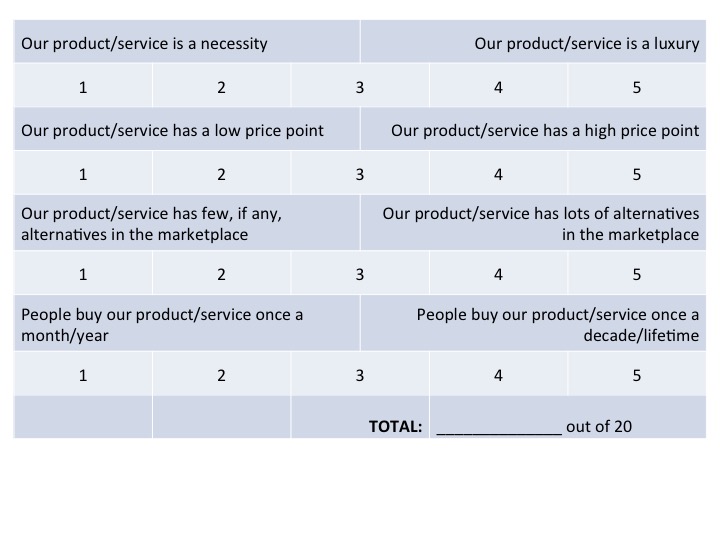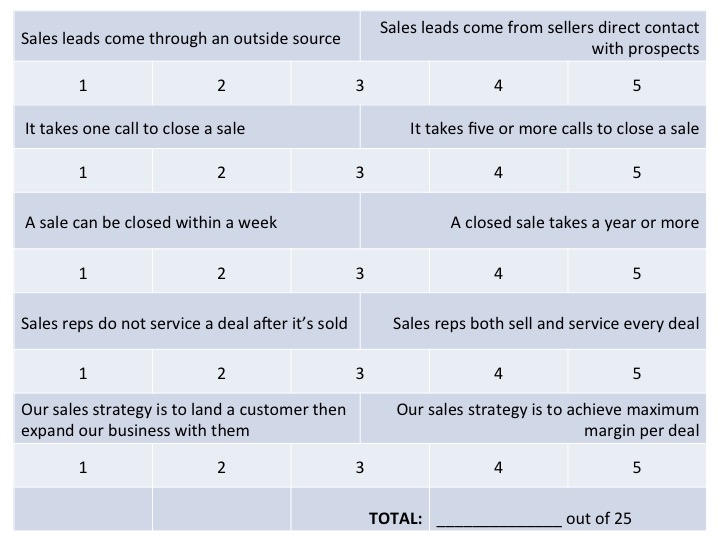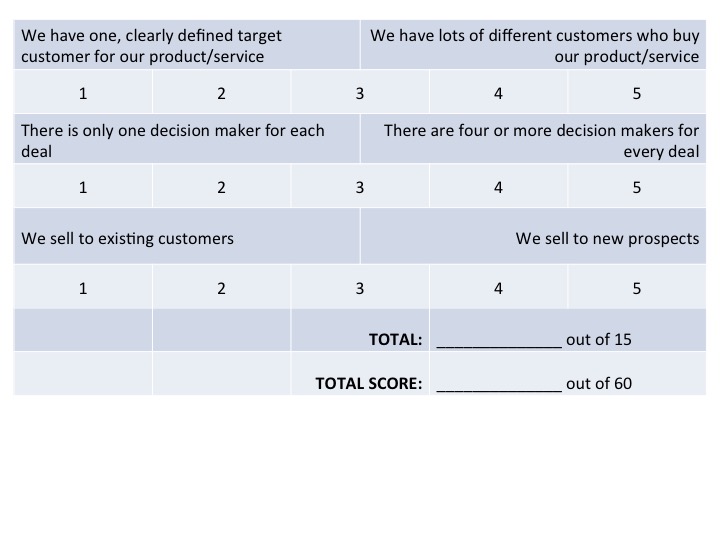Climbing a mountain is hard work. Some mountains, however, are harder to climb than others. Compare climbing Mary’s Peak, a popular hike a few miles from my house that tops out at 4,000 feet above sea level, with climbing Mount Everest, which rises to 29,000 feet.
You prepare very differently for a climb up Mary’s Peak than you do for a climb up Everest. You have very different kinds of people with you on the journey and utilize very different kinds of resources.
So too in sales.
All sales is hard work: an upward climb, so to speak. But some sales paths are more difficult than others. Whether you are the VP of Sales for a Fortune 500 firm or sell your own services as an independent consultant, it’s critical to know the degree of difficulty ahead of you so you can do everything in your power to reach the summit.
Read each pair of statements below. On a scale of 1-5, select the number that best describes the product (or service) you sell, the process you use to sell it, and the kind of prospects you sell to. I don’t have this assessment as an online form yet, so you’ll have to do this on a (gasp!) separate piece of paper. Total your degree of difficulty scores and read my words of advice at the end of this post.
Degree of Product Difficulty
 Degree of Process Difficulty
Degree of Process Difficulty

Degree of Prospect Difficulty

If your score is between 44 and 60:
The degree of difficulty in your sales path is high. Turnover is probably also high, and good sellers have been hard to find. If you have more than one sales department in your firm, consider filling open sales positions from a sales path with a lower degree of difficulty rather than hiring inexperienced reps into this role. When you find a seasoned climber that likes the wind and the cold, do whatever you can do to keep him or her on your team.
The people who sell for you, like the climbers on Everest, need lots of support, organizationally and emotionally. Look at some of the higher scores on the survey and see if there’s anything you can do lower them a bit, like giving more help generating leads or providing more support with service after the sale. This could ease your degree of difficulty, increase revenue, and reduce turnover. All good things!
If your score is between 28 and 44:
The degree of difficulty in your sales path is moderate. Selling is challenging for your people, but usually not overwhelming. It’s more than likely, however, that your salespeople need more coaching and encouragement than you’re giving them right now. Mount Hood in Oregon is nowhere near the altitude and difficulty of Everest, but it’s still hard to climb with tragedies on the summit every year.
To prevent these tragedies from happening to you, look at some of your higher scores and figure out how you can help your salespeople get better at them. This may mean be teaching them how to reduce time in the funnel and close with fewer appointments. It may mean scrubbing their account list so they’re calling on the best possible prospects. Or it may mean mapping the decision maker matrix to manage it with greater ease.
If your score is between 12 and 28:
The degree of difficulty in your sales path is low. Congratulations! Your lower score may be due a temporary window of opportunity in the marketplace or a hard won competitive advantage. Whatever it is, find out the reason for it and do whatever it takes to to sustain it.
If you have more than one sales department in your firm, consider using this area as an entry point for new sales hires. Also, don’t let more experienced sellers get bored. Push them to attain higher goals than they ever thought possible and challenge them to take on additional responsibilities in the company.

